Recent Posts
Understanding Different Types of Fires and Effective Extinguishing Techniques
4/17/2024 (Permalink)
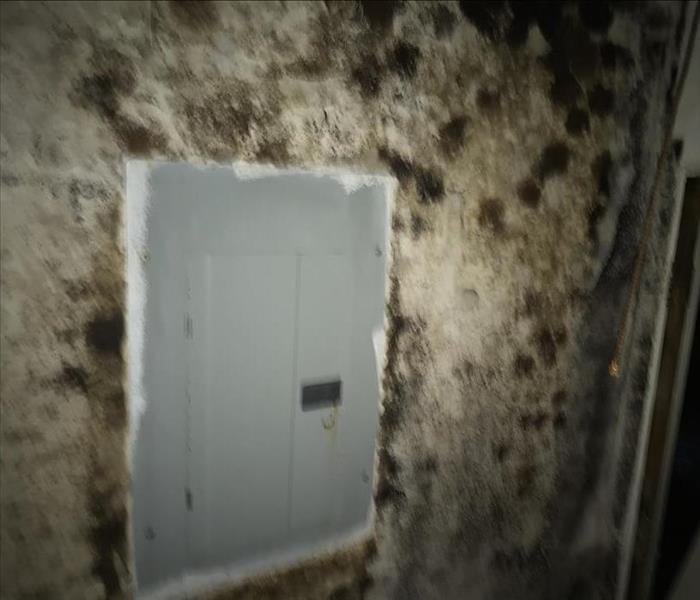 In this blog, we will explore the common types of fires and the best methods to extinguish them.
In this blog, we will explore the common types of fires and the best methods to extinguish them.
Fires can occur in various forms, each requiring a specific approach to extinguish and remediate. Understanding the different types of fires and the appropriate extinguishing techniques is vital for effective fire damage control and smoke damage restoration. In this blog, we will explore the common types of fires and the best methods to extinguish them, helping you take the necessary steps to protect your property and ensure a quick recovery if a fire incident occurs.
Class A Fires: Combustible Solids
Class A fires involve common combustible materials, such as wood, paper, fabric, or plastic. To extinguish Class A fires, use water or water-based fire extinguishers. Thoroughly soak the burning material to cool it down and eliminate the source of ignition. Fire remediation for Class A fires may involve water extraction and proper drying to prevent further damage.
Class B Fires: Flammable Liquids
Class B fires involve flammable liquids like gasoline, oil, grease, or paint. Water should never be used to extinguish a Class B fire, as it can spread the flames or cause the liquid to splash and ignite surrounding areas. Instead, use a foam or carbon dioxide (CO2) fire extinguisher to smother the fire and disrupt the oxygen supply. Fire remediation for Class B fires may require specialized cleaning methods to remove the flammable liquid residue.
Class C Fires: Electrical Equipment
Class C fires involve electrical equipment, such as appliances, wiring, or circuit breakers. In case of a Class C fire, the power source should be immediately shut off if it can be done safely. Using water or foam extinguishers is dangerous, as it can conduct electricity. CO2 or dry chemical fire extinguishers are recommended for Class C fires. After extinguishing the fire and ensuring the area is safe, professional fire remediation may be needed to address any smoke damage to electrical equipment or wiring.
Class D Fires: Combustible Metals
Class D fires involve combustible metals like magnesium, titanium, or sodium. These fires require specialized extinguishing agents, such as dry powder extinguishers specifically designed for Class D fires. This type of fire requires extensive fire damage control and smoke damage restoration to address both the immediate fire impact and any potential chemical reactions.
Class K Fires: Kitchen Fires
Class K fires are specific to kitchen environments and involve cooking oils, grease, or fats. Extinguishing a Class K fire requires the use of wet chemical extinguishers that create a barrier between the hot oil and oxygen, effectively smothering the flames. In addition to fire remediation, specialized cleaning methods may be necessary to remove residue and prevent re-ignition.
Grease Fires: Additional Caution
Grease fires in kitchens deserve special attention due to their high intensity and potential to spread rapidly. Never attempt to extinguish a grease fire with water, as it can cause the hot oil to splatter, spreading the fire further. Instead, use a lid to cover the pan and cut off the oxygen supply, or use a fire extinguisher designed for Class K fires. Prompt fire damage control and smoke damage restoration are crucial to prevent long-term damage to the kitchen area.
Understanding the different types of fires and appropriate extinguishing techniques is essential for effective fire damage control and smoke damage restoration. Remember, every second counts during a fire incident, so always prioritize the safety of yourself and others. If a fire occurs, follow the appropriate extinguishing methods mentioned above. After ensuring everyone's safety, contact fire remediation experts like SERVPRO® to assess the damage, provide professional restoration services, and restore your property to its pre-damage condition, ensuring a smooth recovery from the fire incident.
Mold in Schools: Risks and Prevention Measures
3/13/2024 (Permalink)
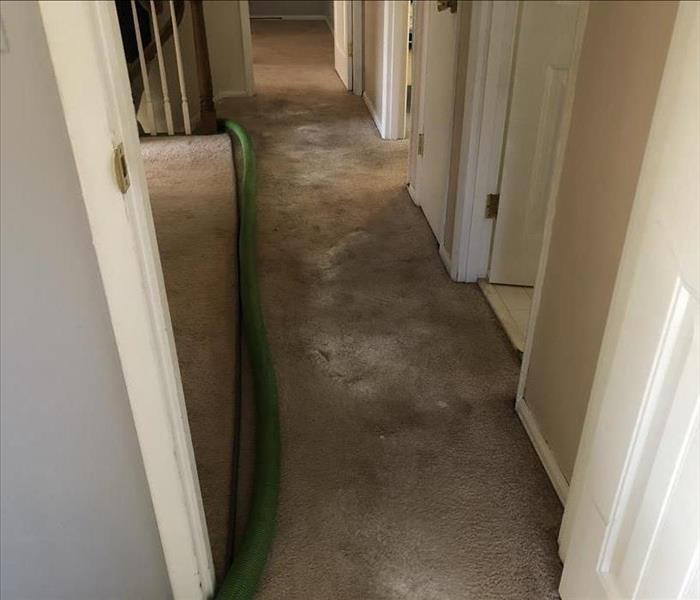 SERVPRO® working on remediating water damage.
SERVPRO® working on remediating water damage.
Mold in schools can pose challenges for both educators and students. Recognizing the risks associated with mold growth and implementing effective prevention measures are crucial for maintaining a safe and conducive learning environment. In this blog post, we'll explore the potential risks of mold in schools and provide practical prevention measures to ensure a healthy space for education.
Identifying Common Areas Prone to Mold
Certain areas within schools are more prone to mold growth due to factors like moisture, poor ventilation, and high humidity. Classrooms, cafeterias, gymnasiums, and locker rooms are common areas where mold can thrive. Regular inspections of these spaces can help identify early signs of mold and prevent its spread.
The Impact of Mold on School Infrastructure
Mold can negatively impact the infrastructure of schools, potentially leading to structural damage over time. Mold feeds on organic materials such as wood, drywall, and insulation. Prolonged exposure to mold can weaken these materials, compromising the structural integrity of the school building. It's crucial to address mold issues promptly to prevent further damage and ensure a safe learning environment.
Moisture Control in Schools
Controlling moisture is a fundamental step in preventing mold growth in schools. Schools should implement measures to address water leaks promptly, ensure proper ventilation in all areas, and use dehumidifiers where necessary. By controlling moisture levels, schools create an environment that is less conducive to mold growth and minimize the risks associated with mold.
Regular Inspections and Maintenance
Regular inspections and maintenance routines are essential for identifying and addressing potential mold issues in schools. School administrators and facility managers should conduct routine checks for signs of water damage, leaks, or areas with poor ventilation. Timely maintenance can prevent mold growth from escalating and contribute to a healthier learning environment.
Professional Mold Assessment and Remediation
If mold is detected in a school, it's crucial to enlist the services of professionals for mold assessment and remediation. Certified experts, like SERVPRO®, can assess the extent of the mold damage, develop a comprehensive remediation plan, and restore the affected areas to a safe condition. Professional mold remediation ensures thorough and effective removal of mold, preventing its recurrence.
Proper Ventilation Systems
Proper ventilation is key to preventing mold growth in schools. Ensure that ventilation systems are functioning optimally in classrooms, gyms, and other shared spaces. Regularly clean and maintain ventilation systems to improve air circulation and reduce humidity levels, creating an environment that is less favorable for mold growth.
Encouraging Good Housekeeping Practices
Promoting good housekeeping practices among school staff and students can contribute to mold prevention. Encourage regular cleaning of classrooms, common areas, and storage spaces. Emphasize the importance of promptly reporting any signs of water damage or leaks to facilitate swift intervention.
Timely Addressing of Water Intrusion
Water intrusion is a primary contributor to mold growth in schools. Whether it's a leaky roof, plumbing issue, or foundation concern, address water intrusion immediately. Identify and fix the source of the problem to prevent ongoing moisture buildup and safeguard the school's infrastructure from potential damage.
Understanding the risks associated with mold in schools and implementing effective prevention measures is crucial for creating a safe and healthy learning environment. By addressing moisture control, conducting regular inspections, and enlisting professional mold remediation services when needed, schools can ensure the longevity of their infrastructure and prioritize the well-being of students and staff. Trust SERVPRO® to be your partner in addressing mold-related concerns and maintaining a conducive environment for education.
Understanding 5 Types of Weather-Induced Water Damage
2/13/2024 (Permalink)
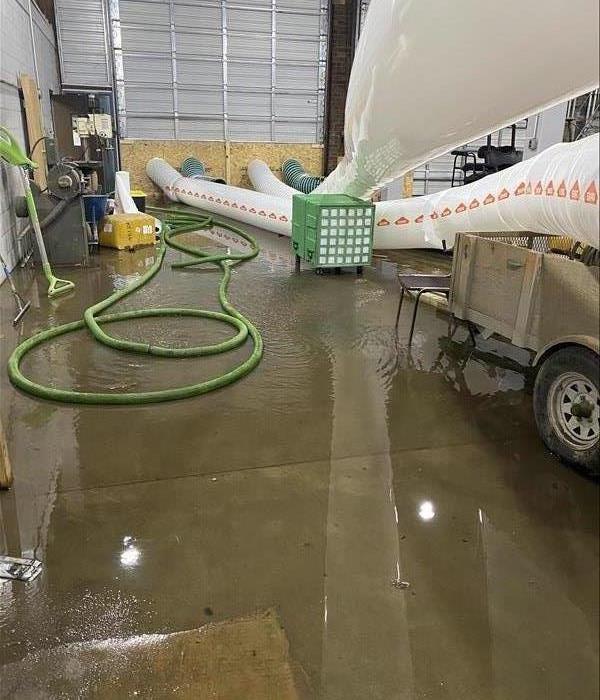 In this blog, we'll explore 5 different types of water damage caused by weather hazards and how to address each effectively.
In this blog, we'll explore 5 different types of water damage caused by weather hazards and how to address each effectively.
Weather hazards can wreak havoc on homes, causing various types of water damage that demand prompt attention and restoration. Understanding some of the most common forms of water damage resulting from weather-related events is important for homeowners in order to be prepared. In this blog, we'll explore 5 different types of water damage caused by weather hazards and how to address each effectively.
1. Flood Damage
Floods are among the most common weather-related water damage occurrences. They result from heavy rainfall, storm surges, or overflowing bodies of water. Floodwaters can penetrate homes, causing extensive damage to structures, belongings, and electrical systems. Quick extraction, drying, and decontamination are crucial after a flood to prevent mold growth and structural issues.
2. Storm Damage
Severe storms, including hurricanes, tornadoes, and windstorms, can cause roof damage, broken windows, and structural breaches, allowing rainwater to infiltrate homes. Storm-related water damage often necessitates immediate repairs to prevent further water intrusion and structural deterioration.
3. Hail Damage
Hailstorms can puncture roofs, siding, and windows, leading to water leaks. Even small-sized hail can cause damage to roofing materials, creating vulnerabilities that allow water to seep into the home. Timely roof inspections and repairs after hailstorms are essential to prevent water damage.
4. Snow and Ice Damage
Snow and ice accumulation on roofs can result in ice dams, causing water to seep under shingles and into the home. Additionally, thawing snow and ice can overwhelm drainage systems, leading to water infiltration. Proper insulation, ventilation, and maintenance of roofing systems can mitigate snow and ice-related water damage.
5. Lightning Strikes and Electrical Damage
Lightning strikes during storms can cause power surges, leading to electrical fires or damage to appliances and wiring. Water damage can occur from extinguishing fires caused by electrical malfunctions. Prompt assessment of electrical systems and appliances is vital after lightning strikes to prevent potential water and fire damage.
Weather hazards can bring various types of water damage, each requiring specific approaches to restoration. From floods to storm-related issues and electrical damage, understanding the distinct forms of water damage caused by weather events empowers homeowners to take proactive measures and seek timely restoration assistance.
At SERVPRO of Monroe, Randolph & Washington Counties, we specialize in mitigating and restoring water damage caused by weather-related events. Our experienced team utilizes advanced techniques and equipment to address different types of water damage effectively. Call us today for professional assistance in restoring your home after weather-induced water damage!
Understanding the Difference Between Flash Floods and River Flooding
1/13/2024 (Permalink)
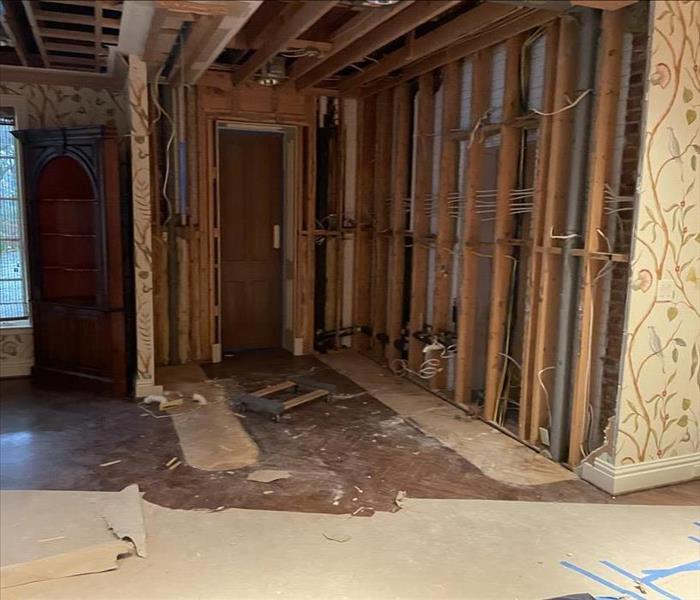 If your home or business faces flood-related damage, SERVPRO is here 24/7 to provide professional restoration services.
If your home or business faces flood-related damage, SERVPRO is here 24/7 to provide professional restoration services.
In regions prone to flooding, understanding the nuances between different types of floods is crucial for proactive preparation. In this blog, we'll explore the differences between flash floods and river flooding, providing you with essential knowledge to safeguard your home and loved ones.
Flash Floods: The Sudden Rush
Flash floods are rapid and intense floods that occur within minutes or hours of heavy rainfall or other sudden events like dam breaks. These floods are characterized by their swiftness and unpredictability, making them particularly dangerous. The water rises rapidly, often catching people off guard and leading to swift and powerful currents.
Key Characteristics
- Speed: Flash floods develop rapidly, with water levels rising in a matter of minutes.
- Trigger Events: Intense rainfall, dam breaks, or sudden water releases can trigger flash floods.
- Geographic Scope: Flash floods are typically localized to specific areas.
River Flooding: A Gradual Rush
River flooding, on the other hand, is a more prolonged and predictable type of flooding. It occurs when rivers overflow their banks due to sustained heavy rainfall over an extended period, melting snow, or a combination of both. River floods develop more slowly compared to flash floods, giving residents more time to prepare.
Key Characteristics
- Speed: River flooding develops over days or weeks, allowing for a more gradual rise in water levels.
- Trigger Events: Persistent heavy rainfall, snowmelt, or a combination of both contribute to river flooding.
- Geographic Scope: River floods can affect larger regions along the course of a river.
Preparation and Safety Measures
Understanding the differences between flash floods and river flooding is crucial for effective preparation. For flash floods, residents should be aware of local topography, have an emergency kit ready, and stay tuned to weather alerts. In the case of river flooding, monitoring river levels, having a family emergency plan, and investing in flood insurance are vital steps for safeguarding your home.
Distinguishing between flash floods and river flooding is a key aspect of flood preparedness. Whether sudden and swift or gradual and predictable, both types of flooding pose significant risks. If your home or business faces flood-related damage, SERVPRO of Monroe, Randolph & Washington Counties is here 24/7 to provide professional restoration services.
Different Types of Fires and How to Extinguish Them
12/13/2023 (Permalink)
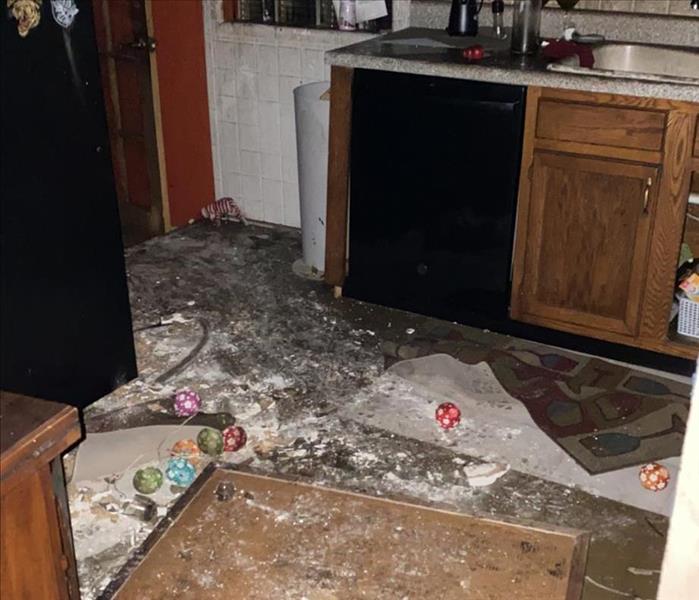 Did you know that fires come in various forms?
Did you know that fires come in various forms?
Did you know that fires come in various forms? Knowing how to properly extinguish them is essential for your safety and that of your property. Understanding the different classes of fires and the suitable extinguishing methods can make a significant difference during an emergency. In this blog, we'll explore the various types of fires and the best ways to extinguish them, so you can be prepared to take swift and effective action when needed.
Class A Fire: Combustible Materials
Class A fires involve common combustible materials like wood, paper, cloth, and plastics. These are some of the most frequent fires encountered in homes and businesses. To extinguish them:
Use Water, Powder, or Foam: Water, powder, and foam extinguishers are highly effective extinguishing agents for Class A fires. A steady stream directed onto the base of the flames can quickly smother and cool the fire, bringing it under control.
Class B Fire: Flammable Liquids and Gases
Class B fires encompass flammable liquids and gases such as gasoline, oil, propane, and solvents. These fires are more challenging to extinguish than Class A fires due to the combustible nature of the materials involved. To extinguish them:
Use a Fire Extinguisher: For Class B fires, it's crucial to use specialized fire extinguishers designed to smother the flames. CO2 extinguishers, foam extinguishers, or dry chemical extinguishers are suitable options. These agents work by removing the oxygen and interrupting the fire's chemical reaction.
Class C Fire: Electrical Fires
Class C fires involve electrical equipment or wiring. Using water or traditional extinguishers is not safe for these fires, as it can lead to electric shock and further hazards. To extinguish them:
- De-energize Electrical Sources: The primary step in tackling a Class C fire is to shut off the power source. Cutting off the electricity supply eliminates the fire's fuel source.
- Use a Class C-rated Fire Extinguisher: Once the power source is off, you can use a Class C-rated fire extinguisher. These extinguishers contain non-conductive agents that can safely extinguish electrical fires.
Class D Fire: Combustible Metals
Class D fires involve combustible metals like magnesium, lithium, and titanium, commonly found in industrial settings. These fires can be particularly challenging to extinguish. To extinguish them:
Use a Specialty Extinguisher: Class D fires require a special dry powder extinguisher designed for metal fires. These extinguishers are essential in environments where metal machining and production take place.
Class K Fire: Kitchen Fires
Class K fires are specific to cooking oils and fats, which are commonly found in kitchens. These fires can be intense and challenging to extinguish with traditional methods. To extinguish them:
Use a Wet Chemical Extinguisher: A Class K fire extinguisher that uses a specialized wet chemical is the most effective choice for kitchen fires. This extinguishing agent not only cools the flames but also reacts with the cooking oil to create a soap-like substance that seals the surface, preventing re-ignition.
General Fire Safety Tips
- Always ensure you have a working fire extinguisher in your home or business. Check the pressure gauge regularly to confirm its readiness.
- Familiarize yourself with the type of extinguisher and the class of fires it is designed to handle. The class is typically labeled on the extinguisher.
- In case of a fire, call 911 immediately, even if you believe you can control it. Fires can escalate rapidly, and it's safer to have professional help on the way.
- Use the P.A.S.S. technique when operating a fire extinguisher: Pull the pin, Aim the nozzle, Squeeze the handle, and Sweep from side to side across the base of the fire.
Understanding the different classes of fires and the appropriate methods to extinguish them is vital for your safety and the safety of your property. Being prepared and knowing how to respond in the event of a fire can make all the difference. Keep fire safety equipment accessible, know how to use it, and always have a fire escape plan in place to protect yourself and your loved ones. Fire safety is a responsibility we all share, and it's crucial for the well-being of our homes and businesses.
How to Prevent Mold Growth in Schools
11/8/2023 (Permalink)
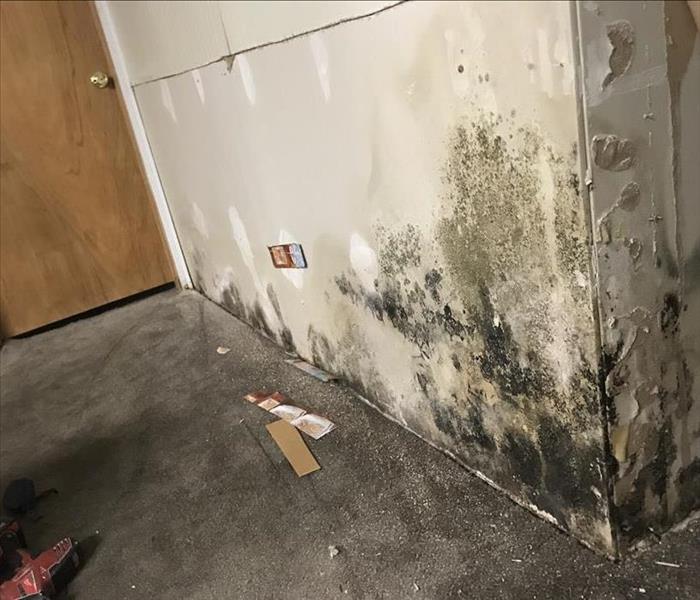 Mold growth in schools is a significant concern that can impact the structural integrity of the building and the well-being of those inside.
Mold growth in schools is a significant concern that can impact the structural integrity of the building and the well-being of those inside.
Mold growth is a significant concern that can impact the structural integrity of educational facilities and the well-being of those inside. In this blog, we will explore the risks associated with mold in schools and provide valuable prevention measures to help keep our schools mold-free.
The Risks of Mold in Schools
Weakening of Materials
Mold thrives in damp and humid environments, and when it takes root within building materials like drywall, wood, and insulation, it gradually weakens them. Over time, this can lead to significant structural issues that are not only costly to repair but can also compromise the safety of the building.
Compromised Integrity
Drywall, which is commonly used for walls and ceilings in schools, is particularly susceptible to mold infestations. Mold can break down the cellulose within the drywall, causing it to become soft and crumble. This not only poses a safety risk but can also result in unsightly holes and damage that require extensive repairs.
Musty Odor
One of the most noticeable signs of mold in schools is the musty and unpleasant odor it emits. This odor can permeate classrooms, hallways, and common areas, creating an uncomfortable and distracting learning environment for students and staff alike. The persistent smell can be particularly disruptive during lessons and activities.
Potential for Disruption
Dealing with mold issues can disrupt the regular operations of the school. Mold remediation efforts may require sections of the building to be temporarily closed off, affecting classroom availability and educational continuity. This disruption can be both logistically challenging and a source of frustration for everyone involved.
Preventing Mold Growth in Schools
- Regular Inspections: Establish a routine inspection schedule to identify potential areas of moisture and mold growth. Pay close attention to areas with inadequate ventilation, such as basements, attics, and bathrooms.
- Effective Moisture Control: Preventing moisture buildup is essential for mold prevention. Promptly address any leaks, roof damage, or plumbing issues. Ensure proper drainage around the school building.
- Proper Ventilation: Promote good air circulation and reduce humidity levels by maintaining adequate ventilation throughout the school. Consider using dehumidifiers in areas prone to excess moisture.
- Educate Staff and Students: Raise awareness about mold prevention among staff and students. Encourage them to report any signs of water damage or mold growth promptly.
- Cleaning and Maintenance: Regularly clean and maintain HVAC systems, as they can harbor mold if not properly cared for. Clean and disinfect surfaces prone to moisture, like sinks and bathroom fixtures.
- Professional Assistance: If you suspect mold growth, it's crucial to seek professional help. SERVPRO® of Monroe, Randolph & Washington Counties, offers mold remediation services to safely and effectively remove mold from your school premises.
Mold growth in schools is a significant concern that can impact the structural integrity of the building and the well-being of those inside. By taking proactive measures and implementing proper prevention strategies, schools in the Waterloo, IL, area can maintain a safe and conducive learning environment. If you need assistance with mold remediation or have concerns about mold in your school, SERVPRO® is here to help. Contact us today for expert assistance in keeping your school mold-free and conducive to learning.
How Weather Conditions Can Increase Water Damage Risks
10/8/2023 (Permalink)
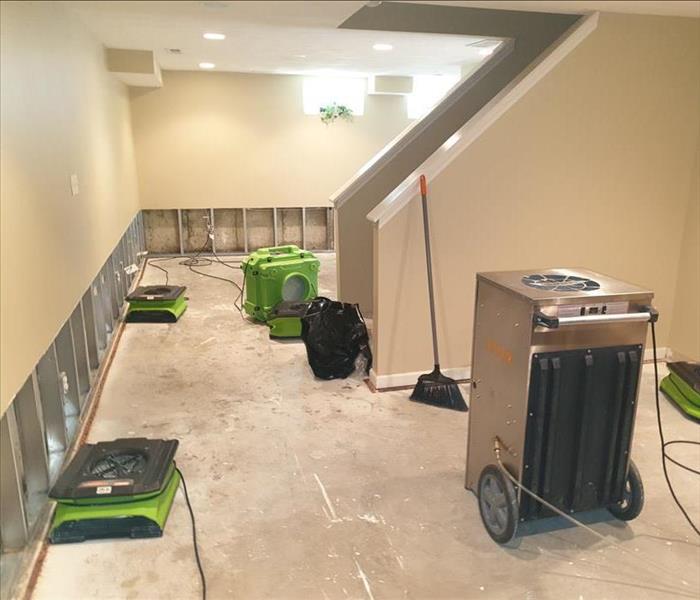 Understanding how weather conditions impact water damage risks in Illinois is essential for property owners.
Understanding how weather conditions impact water damage risks in Illinois is essential for property owners.
When it comes to water damage, understanding the role of weather conditions is crucial for homeowners and businesses alike. The Millstadt, IL, area experiences a wide range of weather patterns, from heavy rainfall to freezing winters, and each can pose unique risks. In this blog, we'll delve into how weather conditions affect water damage risks in Illinois, providing essential insights to help you protect your property.
1. Heavy Rainfall and Flooding
Illinois is no stranger to heavy rains, especially during the spring and summer months. Excessive rainfall can lead to flooding, which is a significant risk for property damage. Floodwaters can infiltrate basements, damage foundations, and ruin belongings. It's essential to have proper drainage systems and flood preparedness in place.
2. Freezing Temperatures and Burst Pipes
Winters in Illinois can be harsh, with freezing temperatures and snowfall. When water freezes, it expands, which can lead to burst pipes. Burst pipes can result in extensive water damage when temperatures rise and the ice thaws. Proper insulation and maintenance of plumbing systems are crucial to prevent this risk.
3. Ice Dams on Roofs
In the winter, ice dams can form on roofs when snow melts and refreezes near the roof's edge. This can lead to water infiltration, damaging ceilings, walls, and insulation. Adequate insulation and ventilation can help prevent ice dams from forming.
4. Thunderstorms and Lightning
Summer thunderstorms in Illinois can bring heavy rains and lightning strikes. Lightning can damage electrical systems and potentially cause fires. Water damage can occur when heavy rains accompany thunderstorms, leading to leaks or flooding.
5. Hail and Roof Damage
Hailstorms can be destructive, causing damage to roofs and siding. Damaged roofing materials can allow water to seep into your home, resulting in water damage. Regular roof inspections and repairs are essential to prevent this risk.
6. Spring Thaws and Rapid Snowmelt
As winter transitions into spring, rapid snowmelt can occur. When large volumes of snow and ice melt quickly, it can overwhelm drainage systems and lead to flooding. Ensuring proper drainage and maintaining gutters and downspouts is crucial during this time.
Understanding how weather conditions impact water damage risks in Illinois is essential for property owners. By being prepared and taking preventative measures, you can minimize the risk of water damage to your home or business. If you ever find yourself facing water damage, remember that SERVPRO of Monroe, Randolph & Washington Counties is here to assist Illinois residents with professional cleanup and restoration services. We're committed to helping you restore your property to its pre-damage condition, no matter the weather conditions.
Understanding the Physical Impact of Storm Damage
9/28/2023 (Permalink)
Storms can have a significant physical impact on our surroundings. From strong winds to heavy rain and hail, storms can cause extensive damage to buildings, infrastructure, and natural landscapes. Understanding the physical impact of storm damage is crucial to effectively respond, mitigate, and recover from the aftermath of a storm. In this blog post, we will explore the various ways storms can physically impact our environment.
Structural Damage to Buildings
One of the most visible impacts of storms is the structural damage they can cause to buildings. High winds can tear off roofs, uproot trees, and collapse weak structures. Powerful storms can break windows, cause walls to buckle, and even lead to complete destruction of buildings. It is essential to ensure that buildings are designed and constructed to withstand strong storms, which may involve reinforcing foundations, using impact-resistant materials, and adhering to local building codes.
Flooding and Water Damage
Storms often bring heavy rainfall, which can result in flooding and water damage. Excessive amounts of water can overwhelm drainage systems and cause rivers, lakes, and other bodies of water to overflow. Floodwaters can enter buildings, causing damage to walls, floors, and electrical systems. Additionally, waterlogged soil can lead to landslides and soil erosion, further impacting the landscape. Proper stormwater management and flood prevention measures are essential to protecting against water damage.
Strong winds associated with storms can cause trees to topple over, leading to damage to properties, vehicles, and infrastructure. Fallen trees can also block roads and pose a safety hazard. In addition to trees, storms can create significant amounts of debris - from broken branches to fallen power lines - which need to be cleared to ensure the safety and functionality of the affected area.
Power Outages and Utility Disruptions
Storms can disrupt essential utilities such as electricity, water, and telecommunications. High winds can knock down power lines and damage electrical infrastructure, resulting in widespread power outages. Damage to water supply systems can leave communities without access to clean water, while telecommunication systems can be affected, making it challenging to communicate and receive emergency information. Restoration of these utilities is a critical aspect of post-storm recovery efforts.
Storms can cause soil erosion by washing away the top layer of soil, which can have detrimental effects on the environment. Erosion can strip away fertile soil, affecting agriculture and natural habitats. Runoff from storms can also carry pollutants into waterways, contaminating water sources and harming aquatic life. Implementing erosion control measures, such as retaining walls and vegetation management, can help reduce the impact of storms on soil erosion and preserve the integrity of the landscape.
Coastal Erosion and Storm Surges
Coastal areas are particularly vulnerable to storms due to the combination of high winds and storm surges. Storm surges occur when high winds push water onto the shore, resulting in significant flooding and erosion along the coastline. The erosion caused by storm surges can weaken the coastal infrastructure, threaten habitats, and even lead to the loss of land. Coastal communities must employ protective measures like sea walls and beach nourishment to reduce the impact of storm surges.
Understanding the physical impact of storm damage is crucial for developing strategies to mitigate and respond to the aftermath of storms. From structural damage to buildings and flooding to power outages, storms can have severe consequences on our environment and infrastructure. By implementing appropriate construction standards, infrastructure improvements, and emergency response plans, we can minimize the physical impact of storms and build more resilient communities that can withstand future weather events.
How to Choose the Right Fire Extinguisher
8/19/2023 (Permalink)
When it comes to fire safety, having the right fire extinguisher on hand is crucial. Fire extinguishers are designed to extinguish different types of fires, and using the wrong type can be ineffective or even dangerous. In this blog post, we will provide a guide to help you choose the right fire extinguisher for various fire hazards and understand the purpose of each type.
Class A Fire Extinguishers: For Ordinary Combustibles
Class A fire extinguishers are designed for fires involving ordinary combustibles such as paper, wood, cloth, and certain plastics.
Features:
- Contains water or a foam-based agent
- Coats the fuel source, reducing oxygen and suppressing the fire
- Safe to use on Class A fires
Recommended for Homes, offices, and schools.
Class B Fire Extinguishers: For Flammable Liquids and Gases
Class B fire extinguishers are suitable for fires involving flammable liquids such as gasoline, oil, paint, and certain gases.
Features:
- Contains a foam-based agent, dry chemical powder, or carbon dioxide (CO2)
- Forms a thick blanket that smothers the flame or displaces oxygen
- Safe to use on Class B fires
Recommended for garages, laboratories, workshops, and kitchens (if there is a potential for oil/grease fires).
Class C Fire Extinguishers: For Electrical Equipment
Class C fire extinguishers are designed for fires involving electrical equipment such as appliances, wiring, and circuit breakers.
Features:
- Contains a dry chemical powder or carbon dioxide (CO2)
- Limits damage to electrical components by non-conductivity
- Safe to use on Class C fires
Recommended for offices, server rooms, and workplaces with electrical equipment.
Class D Fire Extinguishers: For Combustible Metals
Class D fire extinguishers are specifically made for fires involving combustible metals such as magnesium, titanium, and potassium.
Features:
- Contains dry powder agents specifically formulated for metal fires
- Forms a crust over the metal, cutting off oxygen supply and heat
- Safe to use on Class D fires
Recommended for laboratories and industrial facilities working with combustible metals.
Class K Fire Extinguishers: For Kitchen Fires
Class K fire extinguishers are designed for fires involving cooking oils and fats, commonly found in kitchen settings.
Features:
- Contains a special wet chemical agent
- Cools the fire and creates a barrier to inhibit re-ignition
- Safe to use on Class K fires
Recommended for residential and commercial kitchens.
Additional Tips
Consider a multi-purpose fire extinguisher (ABC) that can handle Classes A, B, and C fires. This is suitable for most common fire hazards in homes and businesses.
Ensure that your chosen fire extinguisher is properly labeled and certified by a recognized authority. Regularly inspect and maintain your fire extinguisher according to manufacturer guidelines. Train yourself and others on how to use fire extinguishers correctly.
Install fire extinguishers in easily accessible locations, with clear signage indicating their presence.
Selecting the right fire extinguisher is an essential part of fire safety planning. By understanding the types of fires and the appropriate fire extinguisher for each, you can effectively combat fires and protect lives and property. Remember to consider the specific hazards in your environment and choose fire extinguishers accordingly. Regular maintenance and proper training will ensure that your fire extinguishers are always ready for use during an emergency, providing you with peace of mind and enhanced fire safety.
The Sewage Damage Process: Steps to Address and Restore Sewage
7/24/2023 (Permalink)
Dealing with sewage damage can be a daunting and unpleasant experience. Sewage backups or leaks can cause significant damage to your property and pose health risks. Understanding the sewage damage process and taking immediate action is crucial to minimize further damage and ensure a safe and thorough restoration. In this blog post, we will guide you through the steps involved in addressing and restoring sewage-related issues.
Ensure Safety
Before addressing sewage damage, prioritize your safety. Sewage contains harmful bacteria, viruses, and other contaminants. Wear protective gear, such as gloves, boots, goggles, and a mask, to avoid direct contact with the sewage. If the damage is extensive or involves hazardous materials, it's best to contact a professional sewage damage restoration company.
Stop the Source and Assess the Damage
If you have a sewage backup or leak, it's important to stop the source as soon as possible. Locate the main sewage valve and shut it off to prevent further flow. Once the source is controlled, assess the extent of the damage. Take photos or videos of the affected areas for insurance purposes and to document the initial condition.
Call a Professional Sewage Damage Restoration Company
Sewage damage requires specialized expertise and equipment to ensure proper cleanup, decontamination, and restoration. Contact a professional sewage damage restoration company immediately. They have the necessary knowledge and experience to handle sewage-related issues safely and effectively.
Water Extraction and Cleanup
The first step in the sewage damage restoration process is the removal of standing water and sewage. The restoration professionals will use powerful pumps and extraction equipment to remove the water from your property. They will also dispose of any contaminated materials that cannot be salvaged.
After water extraction, thorough decontamination and disinfection of the affected areas are essential. Professionals will use industrial-strength cleaning agents and antimicrobial treatments to kill bacteria, viruses, and fungi. They will sanitize and deodorize the surfaces to eliminate odors and prevent mold growth.
Structural Drying
Once the affected areas are cleaned and disinfected, the drying process begins. Restoration professionals will use specialized drying equipment, such as dehumidifiers and air movers, to remove moisture from the structure and prevent secondary damage. They will monitor moisture levels regularly to ensure complete drying.
After the affected areas are thoroughly dried, restoration work can begin. This includes repairing or replacing damaged materials, such as flooring, drywall, and insulation. Restoration professionals will restore your property to its pre-damage condition, ensuring that all structural elements and systems are functioning properly.
Communicate with Your Insurance Company
Contact your insurance company as soon as possible to report the sewage damage. Provide them with the necessary documentation, including photos, videos, and invoices from the restoration company. Follow their instructions for filing a claim and keep a record of all communication for reference.
Addressing sewage damage requires swift action, professional expertise, and proper restoration techniques. By following the steps outlined in this blog post, you can effectively navigate the sewage damage process and ensure a thorough cleanup and restoration. Remember to prioritize safety, contact professionals promptly, document the damage, and communicate with your insurance company. With the help of experienced restoration professionals, you can restore your property and create a safe and healthy environment once again.

 24/7 Emergency Service
24/7 Emergency Service


